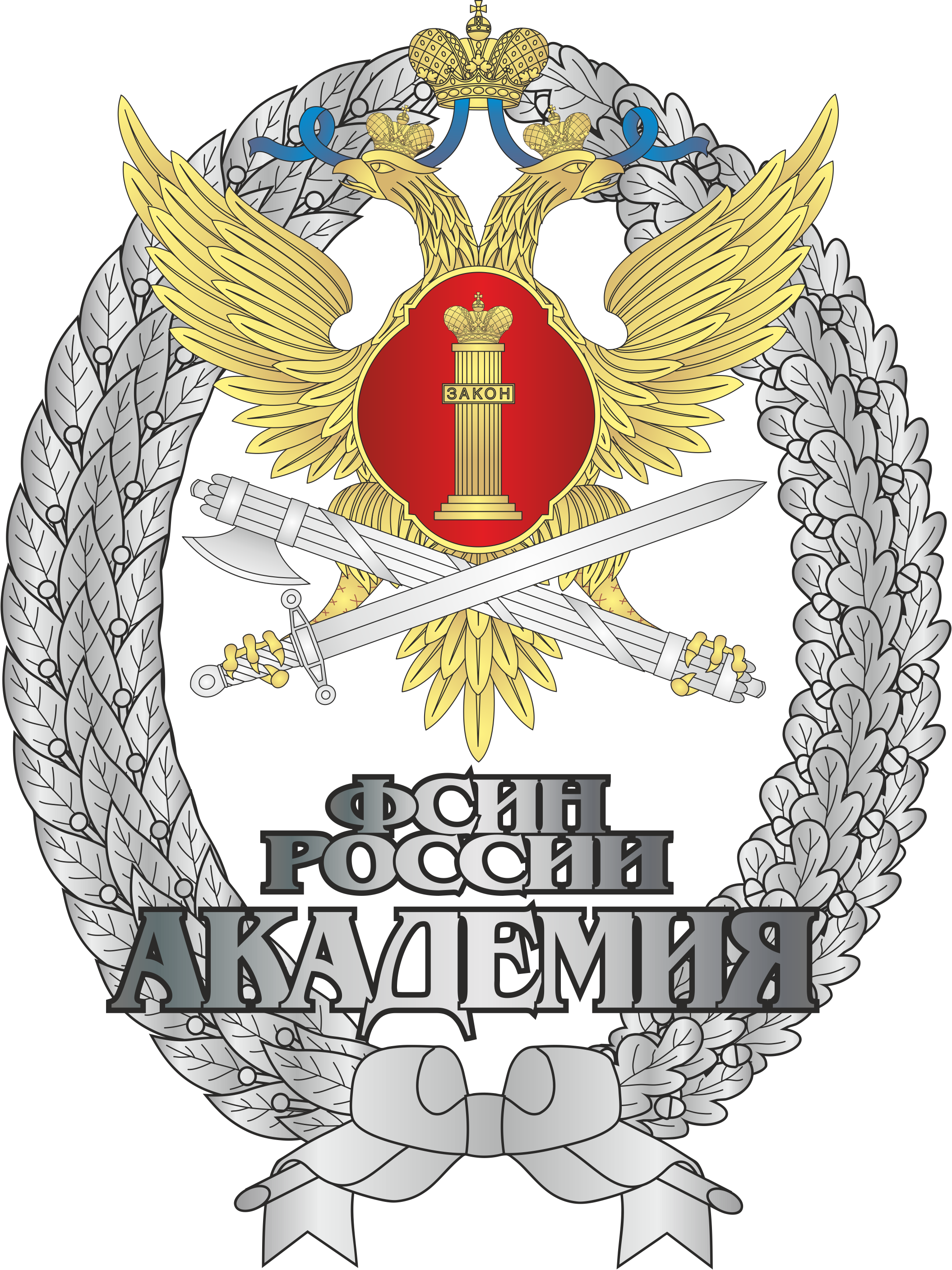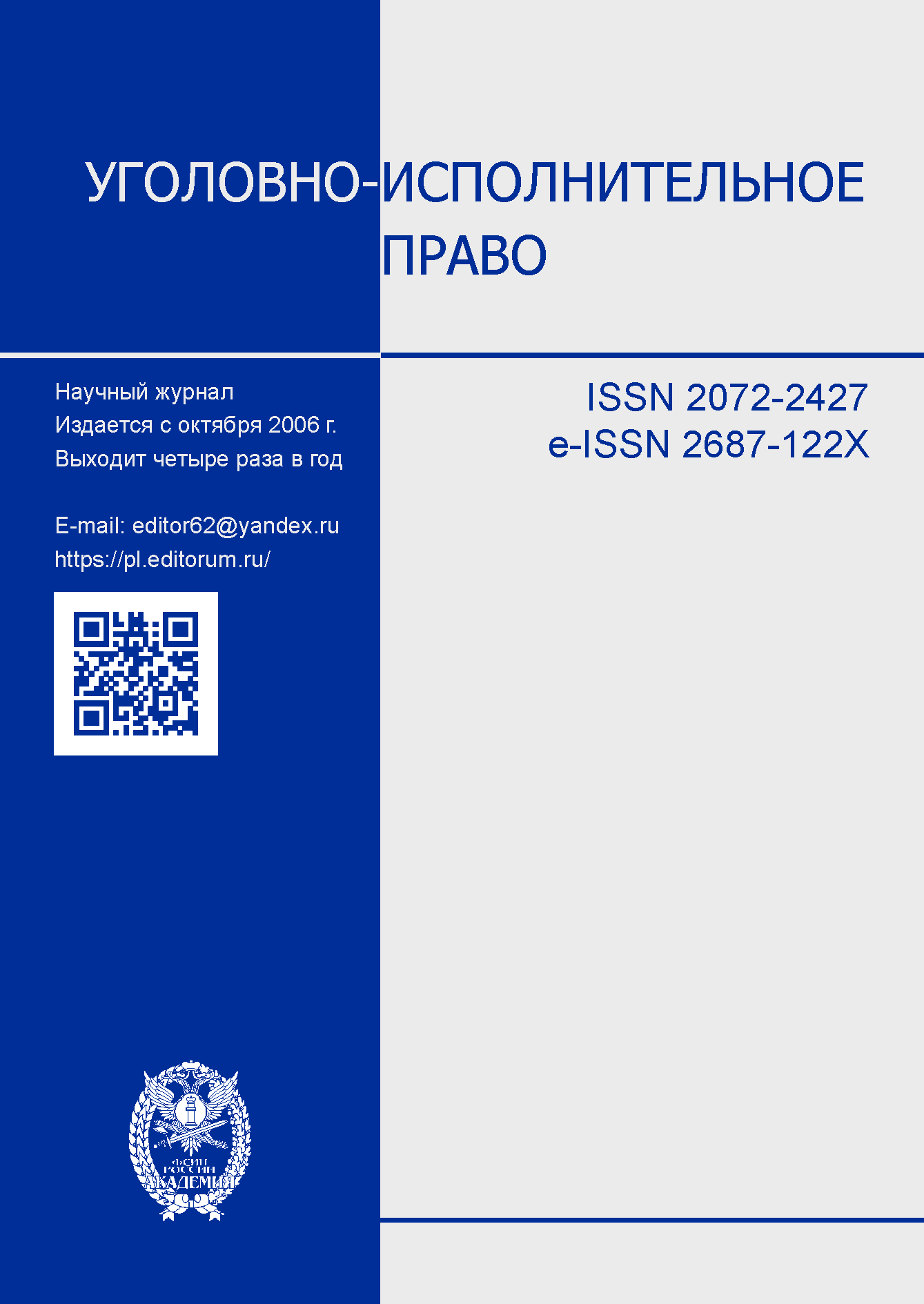UDC 343.81
The differentiation of persons sentenced to imprisonment and the rules for their separate detention in various types of correctional institutions are based on the norms of criminal and penal legislation. Additional aspects of separate detention are regulated by the orders of the FPS of Russia, the instructions of the administration of the correctional institution. The issues of separate detention of persons sentenced to imprisonment are becoming particularly relevant in the reform of the penal system. The article examines the various positions of scientists regarding the stated problem.
separate detention of convicts, classification of convicts, deprivation of liberty, correctional institutions
1. Foynitsky, I. Ya. 1889, The doctrine of punishment in connection with prison studies, Moscow.
2. Ryabykh, S. B. & Churakov, V. G. 2019, ‘Actual problems of separate detention of convicted women serving criminal sentences in the form of imprisonment’, Bulletin of the Voronezh Institute of the Federal Penitentiary Service of Russia, iss. 1, pp. 197–201.
3. Struchkov, N. A. & Bryzgalov, V. N. 1967, Classification of persons sentenced to imprisonment and their definition of the type of correctional labor colony, Kiev.
4. Prihozhaja, L. E. 2021, ‘Analysis of the current state of the separate detention of convicted women in places of deprivation of liberty’, Law and the state: theory and practice, iss. 10(202), pp. 134–138.
5. Hwang, T. S. 2019, Serving sentences by convicted foreign citizens and stateless persons: PhD thesis (Law), Ryazan.
6. Grushin, F. V. 2019, The system of factors determining the development of penal enforcement policy and penal enforcement legislation: Sc.D thesis (Law), Yekaterinburg.
7. Pelyushenko, V. N. 1998, Classification of persons sentenced to imprisonment and their distribution in correctional institutions: PhD thesis (Law), Krasnodar.
8. Prihozhaja, L. E. 2019, ‘Age periodization of youth and its impact on the separation of convicts in correctional institutions in Russia’, Law and the state: theory and practice, iss. 12(180), pp. 172–174.
9. Kimachev, A. N. 2016, ‘On the issue of abandonment in educational colonies of persons sentenced to imprisonment who have reached the age of majority’, Bulletin of the Institute: crime, punishment, correction, iss. 3(35), pp. 42–43.
10. Sadovnikova, M. N. & Mokeev, I. R. 2016, ‘Deprivation of liberty of minors: some issues of effectiveness’, Siberian Legal Bulletin, iss. 4(75), pp. 46–52.
11. Golik, Yu. V. & Korobeev, A. I. 2017, ‘Zigzags of Russia’s Criminal Law Policy: out of the Fire and into the Flames’, Society and Law, iss. 3(61), pp. 17–21.
12. Matskevich, I. M. 2015, ‘White-collar crime: an old theory in modern reality’, in Modern problems of criminal policy: proceedings of the VI International Scientific and Practical Conference, pp. 3-13, Krasnodar.
13. Seliverstov, V. I. & Chorny, V. N. 2021, ‘On separate and separate detention of convicts while serving imprisonment for economic and official crimes’, Bulletin of the Kuzbass Institute, iss. 2(47), pp. 99–106.
14. Chorny, V. N. & Senatova, E. V. 2018, ‘Peculiarities of the execution of imprisonment in relation to persons who have committed crimes in the field of economics’, Bulletin of the Samara Law Institute, iss. 4(30), pp. 74–79.
15. 15. Krymov, A. A. 2016, ‘Some aspects of the interaction of the Federal Penitentiary Service with the Russian Orthodox Church on countering proselytism and recruitment of adherents of Neo-Paganism, radical Islam, pseudo–religious extremism’, in Countering proselytism and recruitment of adherents of Neo-paganism, radical Islam, pseudo-religious extremism and its extreme manifestations in the socio-political life of society - terrorism: prevention of their negativeimpact on convicted persons in places of serving criminal sentences: collection of materials of the IV International Scientific and Practical Conference, pp. 11–13, Ryazan.
16. Chistyakov, A. A. & Vladimirov, D. M. 2020, ‘Countering the possibilities of the emergence and spread of extremism in institutions of the penal enforcement system’, Man: crime and punishment, vol. 28 (1–4), iss. 3, pp. 417–424.
17. Grishko, A. Ya. 2019, ‘Personal characteristics of those convicted of terrorism and extremist activities: the expediency of taking into account in the execution of sentences in the form of imprisonment’, Penitentiary law: legal theory and law enforcement practice, iss. 2 (20), pp. 87–92.
18. Zelenyak, I. M. 2010, ‘Separate detention of convicts as a means of preventing self-determination of penitentiary crime’, Man: crime and punishment, iss. 3(66), pp. 13–16.
19. Komissarenko, E. S. 2020, ‘Separate detention of various categories of convicts, as well as suspects and accused’, Bulletin of the Saratov State Law Academy, iss. 2(133), pp. 185–193.
20. Dementiev, S. I. 1981, Deprivation of liberty: criminal law and correctional labor aspects, Rostov-on-Don.
21. Milyukov, S. F. 1980, Criminal law significance of criminological characteristics of a criminal: PhD thesis (Law), Moscow.
22. Shaikhislamova, O. R. 2007, ‘Classification of persons sentenced to imprisonment’, Proceedings of the Saratov University. Economics, Management, Right series, vol. 7, iss. 2, pp. 53–55.











